
Writing seasonal greetings can be a delightful and creative process. Whether you’re crafting messages for the holidays, birthdays, or special occasions, it’s important to make them heartfelt and memorable. In this guide, we’ll explore various tips and ideas for writing seasonal greetings that resonate, especially for beginners.
Understanding Seasonal Greetings
Seasonal greetings are expressions of goodwill that celebrate various times of the year. These can be tailored for specific seasons like winter, spring, summer, and fall, or for events such as Christmas, Thanksgiving, New Year, Halloween, and more. The essence of a seasonal greeting is to convey warmth and joy while celebrating a particular theme.
Choosing the Right Tone
The tone of your greeting can vary depending on the audience. For professional contexts, a more formal approach is suitable, while personal messages can be casual and playful. Here are some tips on how to choose the right tone:
- Consider the relationship: Tailor your greeting based on your relationship with the recipient.
- Reflect the occasion: Match the tone to the significance of the event.
- Be authentic: Ensure your greeting feels genuine and is true to your personality.
Types of Seasonal Greetings
To help you brainstorm, here are different types of seasonal greetings you can consider:
1. Holiday Greetings
These include messages for Christmas, Hanukkah, Thanksgiving, and other holidays. Here are a few examples:
- “Wishing you a Merry Christmas filled with joy and laughter!”
- “Happy Thanksgiving! May your day be filled with gratitude and good food.”
2. New Year Wishes
New Year messages are often reflective and hopeful. Try phrases like:
- “Cheers to a new year and new beginnings!”
- “May this year bring you peace, happiness, and prosperity.”
3. Seasonal Changes
As seasons change, so can your greetings. Examples include:
- “Happy Spring! May your days be filled with blooming flowers and sunshine.”
- “Enjoy the cozy beauty of Autumn and the falling leaves!”
Crafting Your Own Greetings
Now that you have an understanding of different types of seasonal greetings, let’s delve into how to craft your own.
1. Start with a Theme
Choosing a central theme can help unify your greeting. You might base it on:
- Nature: Referencing seasonal changes like snowfall or blooming flowers.
- Traditions: Incorporating cultural or personal traditions related to the season.
- Feelings: Emphasizing emotions related to the season, such as gratitude or joy.
2. Personalize Your Message
Personal touches make greetings feel special. Consider:
- Using the recipient’s name.
- Including a personal anecdote or memory.
- Adding a specific wish or hope for them.
3. Use Imagery and Descriptive Language
To paint a vivid picture, use descriptive language. For example:
Instead of saying, “Happy Holidays,” you might say, “Wishing you a season filled with twinkling lights, cozy fires, and cherished moments.”
Incorporating Quotes and Sayings
Quotations can add depth and wisdom to your seasonal greetings. Consider incorporating quotes from famous individuals or even creating your own:
“As the year unfolds, may each moment be a gift.” – Anonymous
Tips for Specific Seasonal Greetings
Spring Greetings
Spring symbolizes renewal. Focus on growth and positivity:
“May your life blossom this spring season!”
Summer Greetings
Summer is all about warmth and fun:
“Hope your summer is filled with laughter, adventure, and sunshine.”
Fall Greetings
With fall comes a sense of reflection and gratitude:
“Let’s give thanks for the beauty of autumn and the blessings we share.”
Winter Greetings
Winter greetings can be cozy and festive.
“Warm wishes for a holiday season filled with peace and joy!”
Using Technology for Seasonal Greetings
In today’s digital age, technology makes it easier to send seasonal greetings. Consider:
- E-cards: Send personalized e-cards for various occasions.
- Social Media: Post your greetings on platforms like Facebook or Instagram.
- Messaging Apps: Use WhatsApp or similar apps for instant greetings.
Examples of Seasonal Greetings
Let’s summarize with some practical examples:
Christmas Greeting Example:
“Merry Christmas! May your home be filled with love, laughter, and joy this festive season.”
Thanksgiving Greeting Example:
“Wishing you a Thanksgiving brimming with love, laughter, and good food around the table.”
New Year Greeting Example:
“Happy New Year! Here’s to new adventures and cherished memories in the coming year!”
Spring Greeting Example:
“Happy Spring! Wishing you sunshine, flowers, and happiness in every step you take.”
Conclusion
Writing seasonal greetings can be a fun and satisfying way to express your feelings. By understanding your audience, choosing the right tone, and adding personal touches, you can create greetings that will be cherished. Remember to have fun with the process and let your personality shine through your words. Happy writing!
Writing seasonal greetings can be a delightful and creative process. Whether you’re crafting messages for the holidays, birthdays, or special occasions, it’s important to make them heartfelt and memorable. 
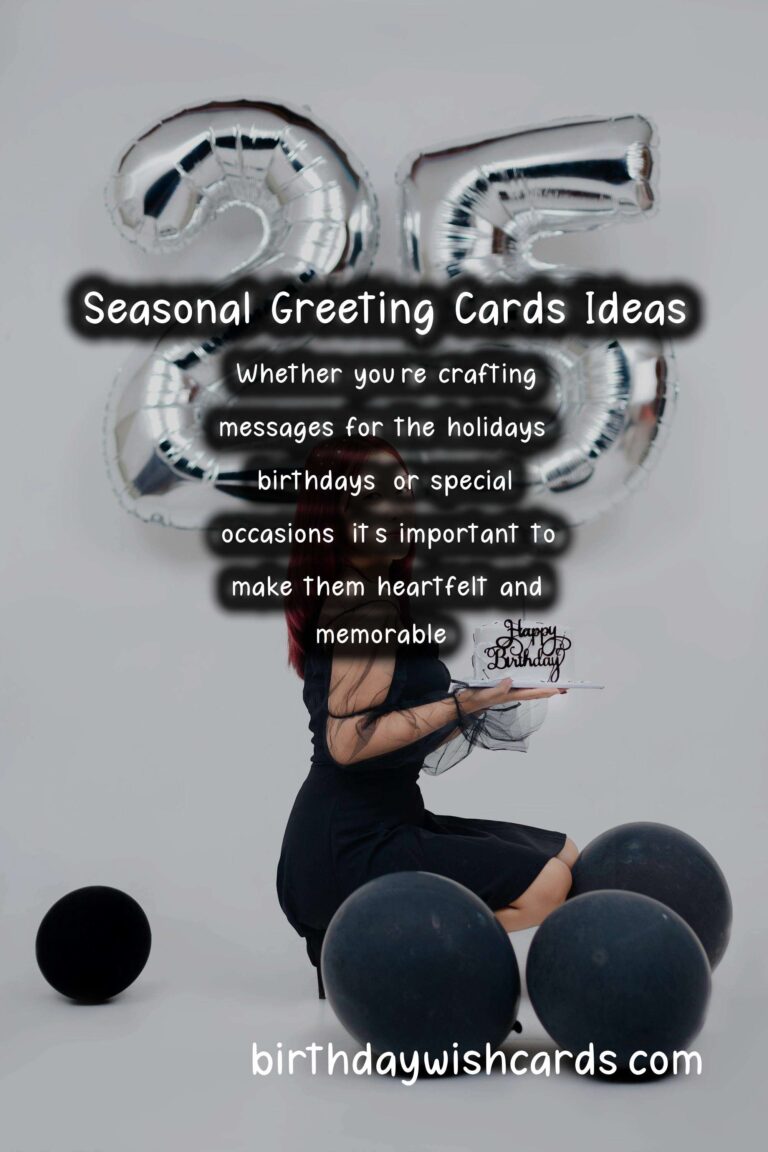



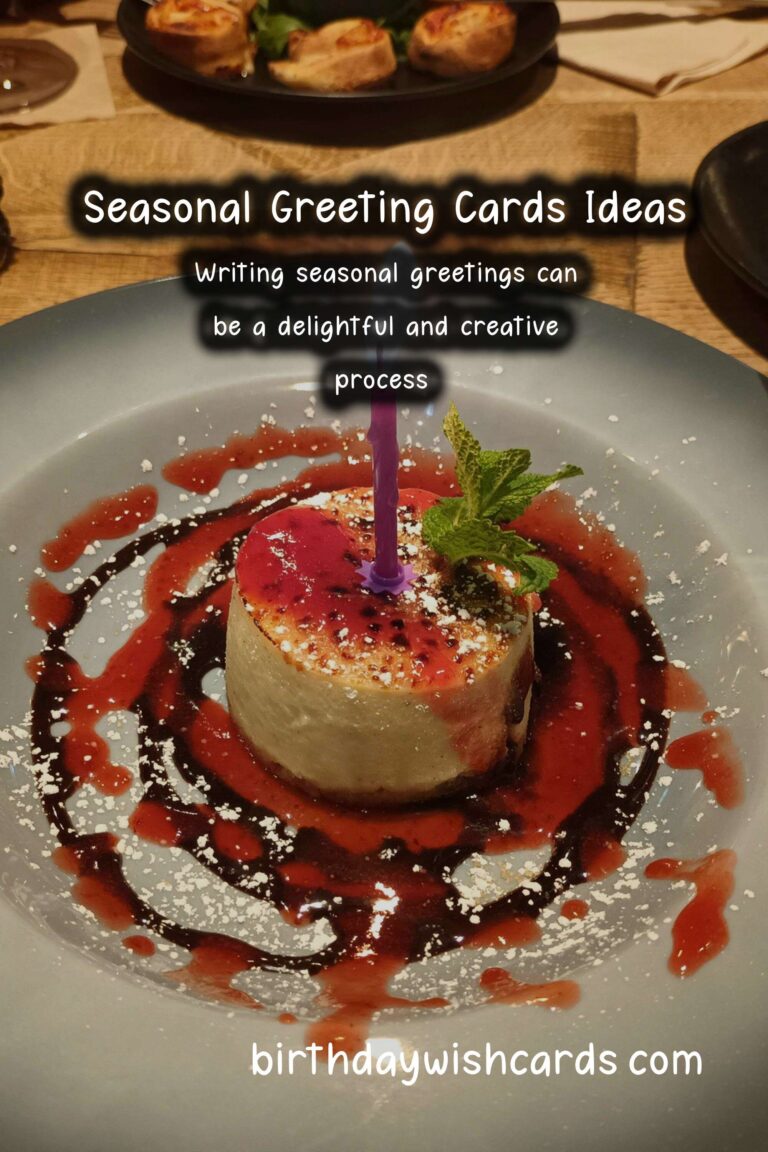
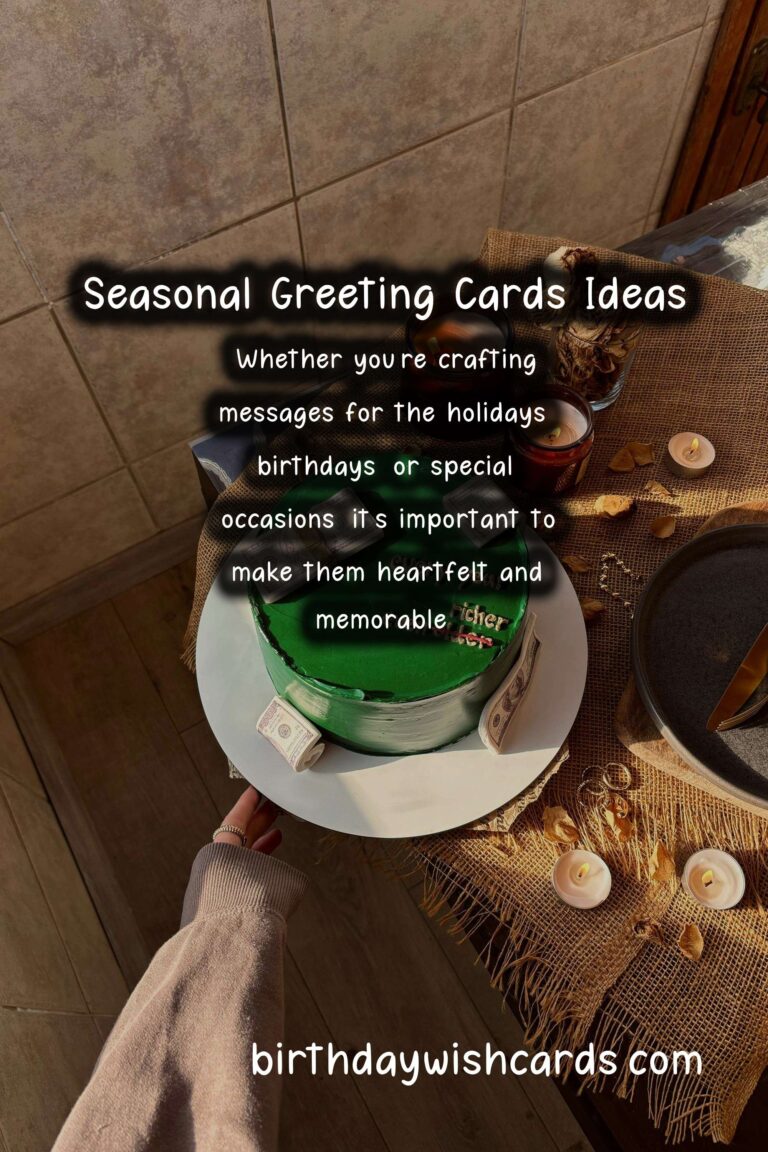
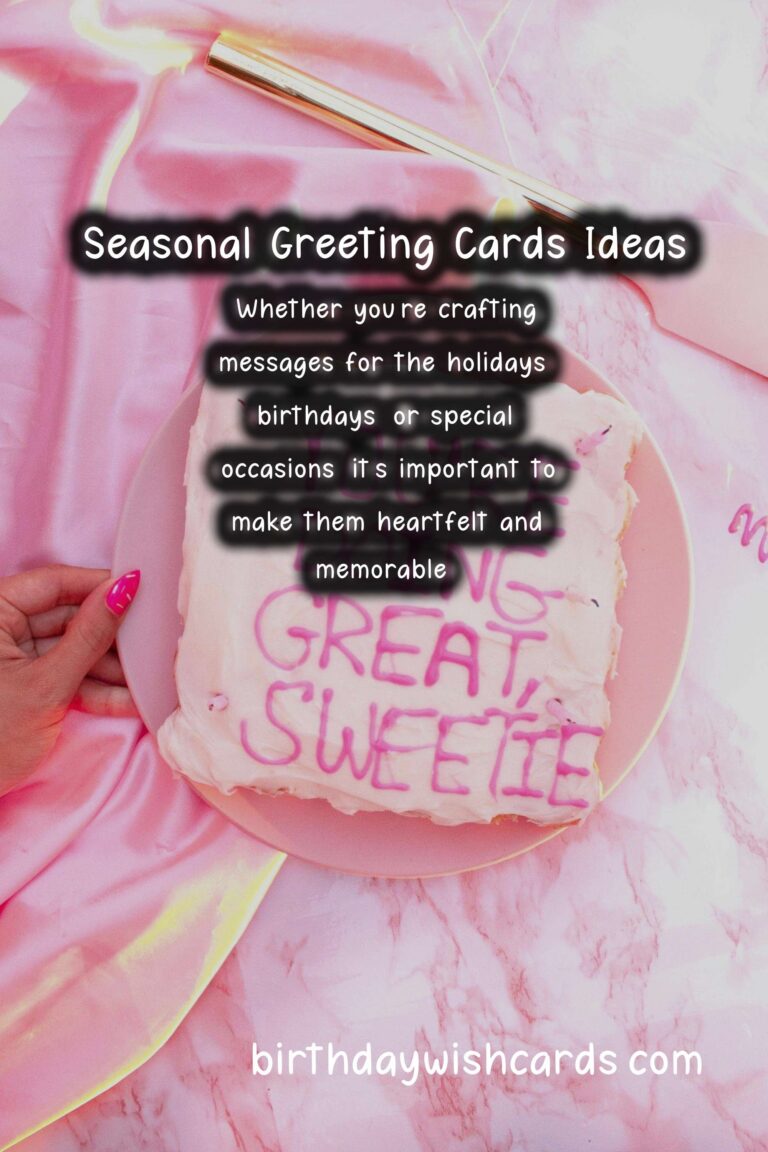
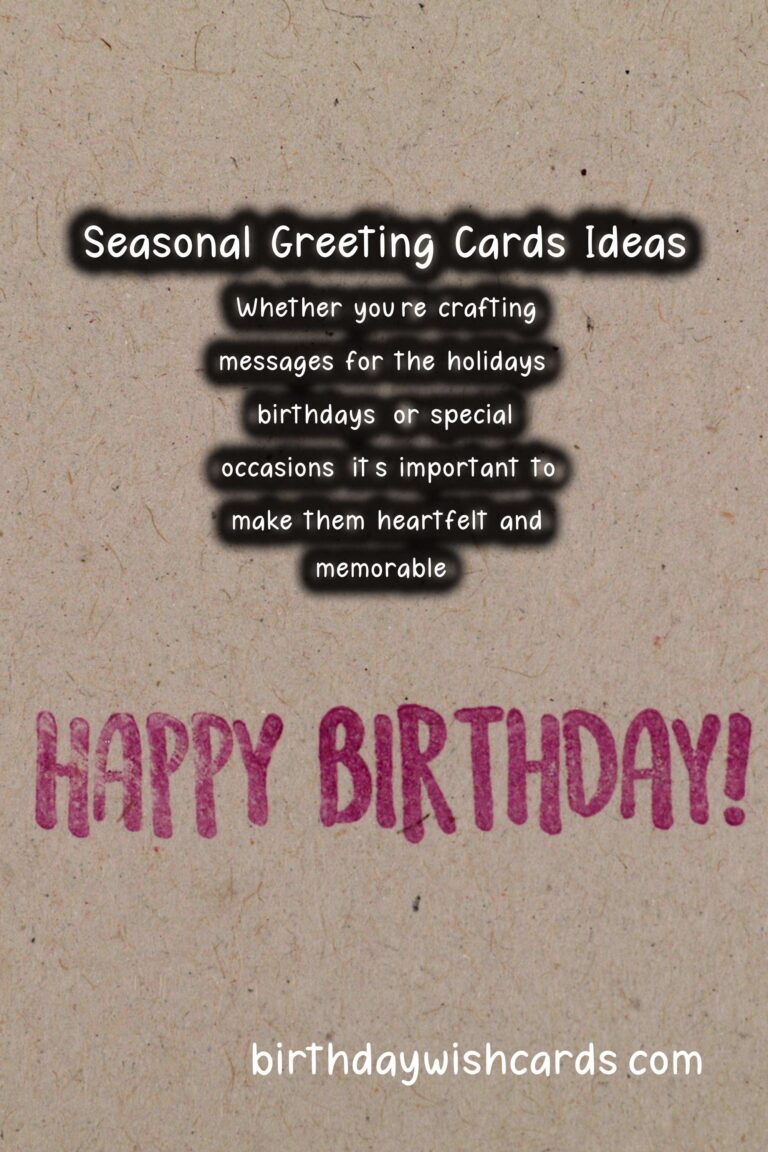
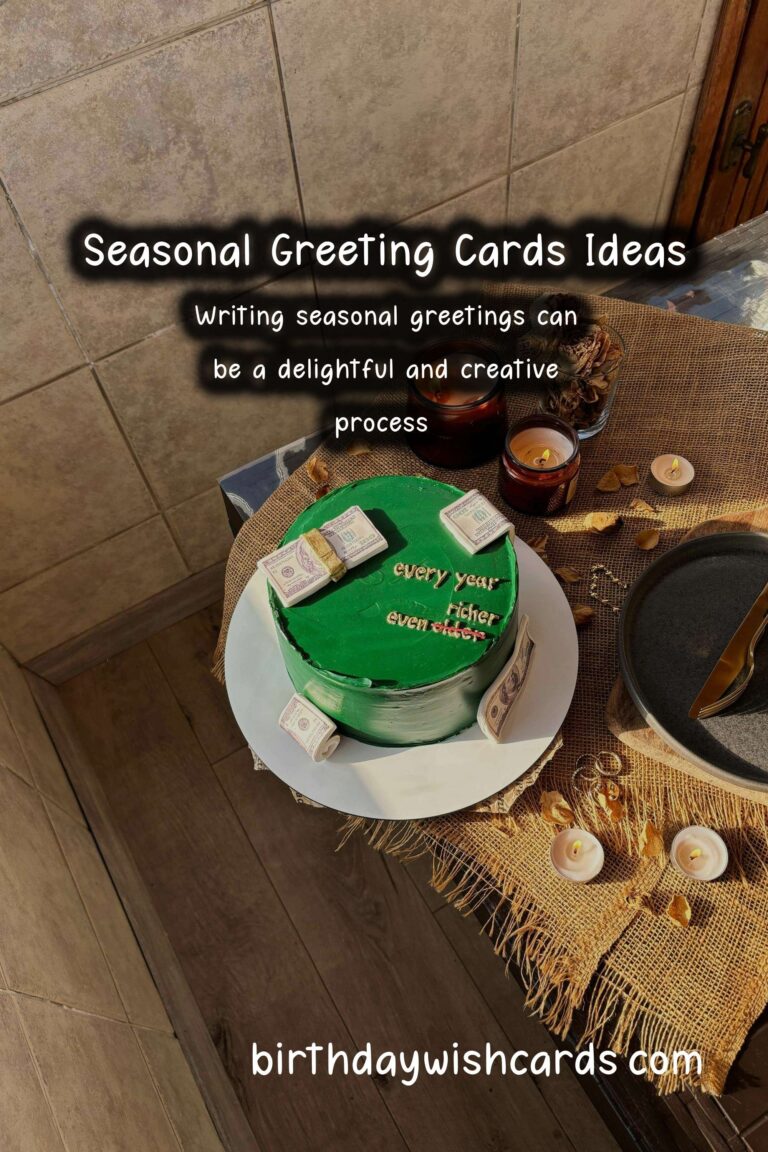
#SeasonalGreetings #WritingTips




